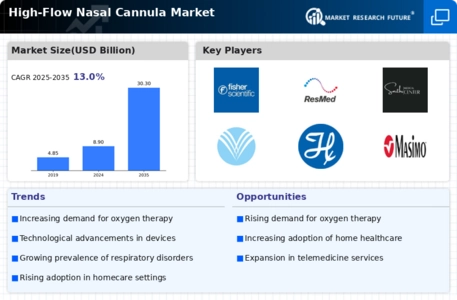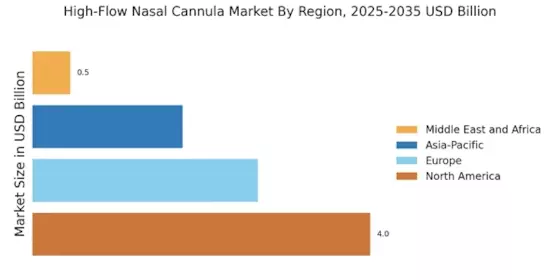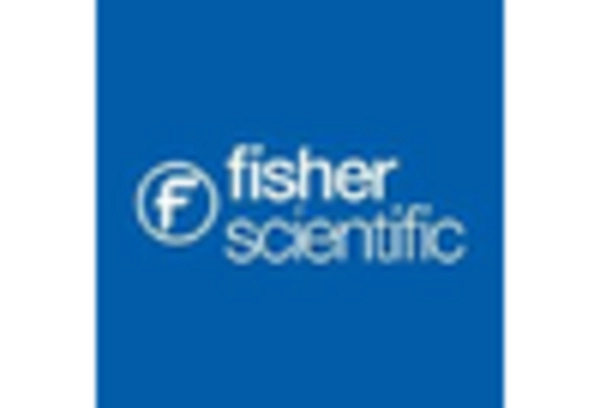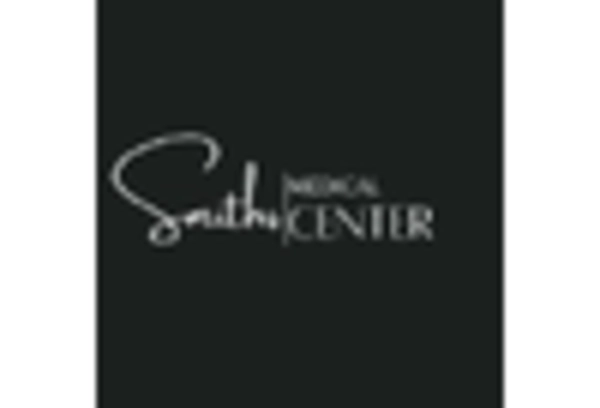High Flow Nasal Cannula Market Summary
As per MRFR analysis, the High-Flow Nasal Cannula Market Size was estimated at 8.9 USD Billion in 2024. The High-Flow Nasal Cannula industry is projected to grow from 10.06 USD Billion in 2025 to 34.15 USD Billion by 2035, exhibiting a compound annual growth rate (CAGR) of 13.0 during the forecast period 2025 - 2035.
Key Market Trends & Highlights
The High-Flow Nasal Cannula Market is experiencing robust growth driven by technological advancements and increasing demand for non-invasive solutions.
- North America remains the largest market for high-flow nasal cannulas, driven by advanced healthcare infrastructure.
- The Asia-Pacific region is emerging as the fastest-growing market, fueled by rising healthcare investments and increasing respiratory disorders.
- Nasal cannulas represent the largest segment, while air humidifiers are witnessing the fastest growth due to their enhanced patient comfort.
- Key market drivers include technological advancements and the rising demand for non-invasive solutions, particularly in the context of chronic obstructive pulmonary disease (COPD) and sleep apnea.
Market Size & Forecast
| 2024 Market Size | 8.9 (USD Billion) |
| 2035 Market Size | 34.15 (USD Billion) |
| CAGR (2025 - 2035) | 13.0% |
Major Players
Fisher & Paykel Healthcare (NZ), Philips (NL), Medtronic (US), ResMed (AU), Smiths Medical (US), Teleflex (US), Vyaire Medical (US), Becton Dickinson (US)


















Leave a Comment